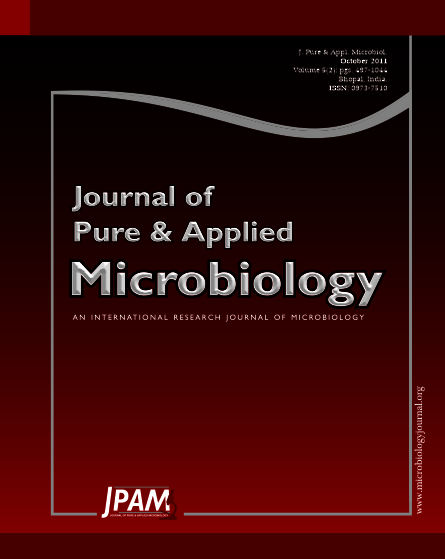A prospective study was carried out in 50 burn patients admitted in Burn unit of S.S. Institute of Medical Sciences and Research Centre, Davangere, Karnataka for over a period of two year to evaluate time-related changes in aerobic bacterial colonization and their sensitivity pattern. Periodic swabs were taken from the burn wound on Day 0, Day 7, Day 14 and Day 21 to see the changing pattern of organisms during hospital stay of patients. Among the 200 samples, single organism was isolated in 95% samples and mixed organism in 5% Among single isolates Pseudomonas aeruginosa was leading (36%) followed by Staphylococcus aureus (20%), Coagulase negative Staphylococcus (10%) and Klebsiella (10%). Among mixed growth Pseudomonas aeruginosa was still leading organism followed by Acinetobacter baumanni. There was time -related changes in bacterial isolation from burn wound during hospital stay of patients. On 7th day of admission 36% of Pseudomonas aeruginosa was isolated followed by Staphylococcus aureus and only 10% each Klebsiella pneumoniae and Proteus mirabilis were isolated. These findings were gradually changing with time and on day 14th Staphylococcus aureus were only 4.2% whereas Klebsiella pneumoniae was isolated in 25% and Pseudomonas aeruginosa in 31.3% and Acinetobacter baumannii i in 16.7%. On 21st day Pseudomonas aeruginosa in 35.7%.
Antimicrobial sensitivity test showed that Pseudomonas aeruginosa was highly resistant to antimicrobial agents. It was most sensitive to Imipenem (66.7%) followed by Aztreonam (55.6%) and piperacillin (55.6%). Similarly Klebsiella pneumoniae was highly sensitive to imepenem (41.6%). Its resistance to Ampicillin was 91.6% followed by Ciprofloxacin (83.3%), Gentamicin (75.0%) and Cotrimoxazole. Staphylococcus aureus, CoNS and Enterococci feacalis were 100% sensitive to Vancomycin. 40% of the isolates were resistant to Cephoxitin (Methicillin resistant Staphylococcus aureus). Among Enterococci feacalis, maximum resistance was seen for the drugs like Penicillin (80%), Ampicillin (80%), Cephalexin (80%) and Ceftriaxone (80%).
These bacteria, isolated from the burn patients, were almost all higher in antimicrobial resistance rate. Since these bacteria showed very high resistant rates, they must be avoided in order to control a hospital-acquired infection. Our results seem helpful in providing useful guidelines for choosing effective empiric antimicrobial therapy against bacteria isolated from the burn patients at our institute
Burn, Time-related changes in aerobic bacterial colonization, Pseudomonas aeruginosa
© The Author(s) 2011. Open Access. This article is distributed under the terms of the Creative Commons Attribution 4.0 International License which permits unrestricted use, sharing, distribution, and reproduction in any medium, provided you give appropriate credit to the original author(s) and the source, provide a link to the Creative Commons license, and indicate if changes were made.


